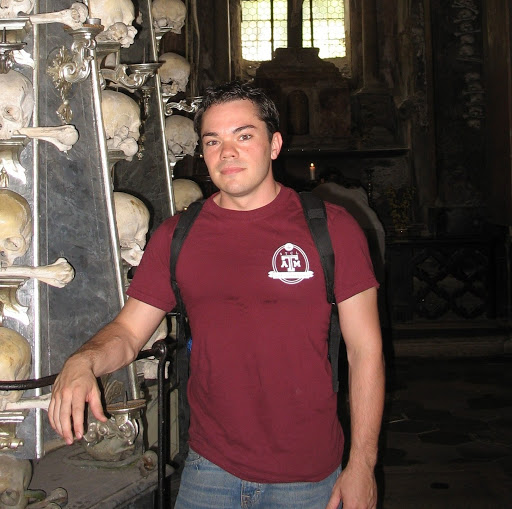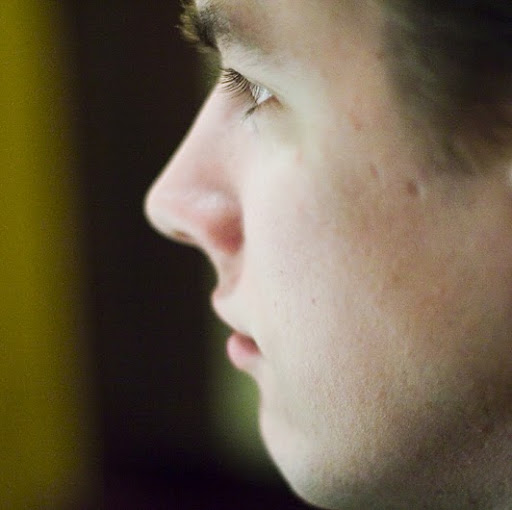Martin A Hunt
age ~54
from San Marcos, TX
- Also known as:
-
- Martin D Hunt
- Phone and address:
-
139 Sherwood St, San Marcos, TX 78666
(512)7547187
Martin Hunt Phones & Addresses
- 139 Sherwood St, San Marcos, TX 78666 • (512)7547187
- Alexandria, VA
- Columbia, MO
- Indianapolis, IN
Ranks
-
Licence:Texas - Eligible To Practice In Texas
-
Date:1995
Isbn (Books And Publications)

Machine Vision Applications in Industrial Inspection IX: 22-23 January 2001, San Jose, [California] USA
view sourceAuthor
Martin A. Hunt
ISBN #
0819439797

Machine Vision Applications in Industrial Inspection X
view sourceAuthor
Martin A. Hunt
ISBN #
0819444049

Machine Vision Applications in Industrial Inspection XI: 22-24 January, 2003, Santa Clara, California, USA
view sourceAuthor
Martin A. Hunt
ISBN #
0819448117



Teach Yourself English Vocabulary: As a Foreign/Second Language
view sourceAuthor
Martin Hunt
ISBN #
0658021370

License Records
Martin Hunt
License #:
E-3114 - Expired
Category:
Engineering Intern
Name / Title
Company / Classification
Phones & Addresses
Universal Kitchens
Kitchen & Bath - Design & Remodeling
Kitchen & Bath - Design & Remodeling
371 Horton St. (Rear), London, ON N6K 3N3
(519)4338558
(519)4338558
Universal Kitchens
Kitchen & Bath - Design & Remodeling
Kitchen & Bath - Design & Remodeling
(519)4338558
Manager
Coherent Logix, Inc.
Semiconductors · Computer Systems Design · Mfg Semiconductors/Related Devices · Semiconductors & Related Devices Mfg
Semiconductors · Computer Systems Design · Mfg Semiconductors/Related Devices · Semiconductors & Related Devices Mfg
1120 S Capital Of Tx Hwy BLDG 3 SUITE 310, Austin, TX 78746
1120 S Capital Of Texas Hwy BLDG 3, Austin, TX 78746
(512)3828940
1120 S Capital Of Texas Hwy BLDG 3, Austin, TX 78746
(512)3828940
Us Patents
-
System And Method For Correlated Noise Removal In Complex Imaging Systems
view source -
US Patent:6763142, Jul 13, 2004
-
Filed:Sep 7, 2001
-
Appl. No.:09/949266
-
Inventors:Martin A. Hunt - Austin TX
-
Assignee:nLine Corporation - Austin TX
-
International Classification:G06K 940
-
US Classification:382260, 382145
-
Abstract:In the present disclosure a system and method are described for removing fixed pattern noise. The system includes a positioning system for holding and positioning a target, an optical system for capturing images or the target, and a fixed pattern noise removal engine for identifying and removing fixed pattern noise. The fixed pattern noise removal engine preferably identifies fixed pattern noise by analyzing a reference image and target image.
-
System And Method For Registering Complex Images
view source -
US Patent:6873354, Mar 29, 2005
-
Filed:Sep 7, 2001
-
Appl. No.:09/949423
-
Inventors:Martin A. Hunt - Austin TX, US
Bichuan Shen - Austin TX, US -
Assignee:nLine Corporation - Austin TX
-
International Classification:H04N009/47
-
US Classification:348 95
-
Abstract:A system and method are described for an image registration system and method including a registration engine that receives complex image data for corresponding images. The registration engine generates a correlation map between the complex image pair for relative translation by calculating an inverse of the complex conjugate product of the frequency data of the first image and the frequency domain data of the second, corresponding, image. The frequency domain data may be obtained using Fast Fourier transform-based techniques.
-
System And Method For Acquiring And Processing Complex Images
view source -
US Patent:20040179738, Sep 16, 2004
-
Filed:Sep 12, 2003
-
Appl. No.:10/661187
-
Inventors:Ayman El-Khashab - Austin TX, US
Martin Hunt - Austin TX, US
Mark Schulze - Austin TX, US
Clarence Thomas - Austin TX, US
Edgar Voelkl - Austin TX, US -
International Classification:G06K009/68
G06K009/64
G06K009/32 -
US Classification:382/218000, 382/278000, 382/294000
-
Abstract:In digital holographic imaging systems, streamed holograms are compared on a pixel-by-pixel basis for defect detection after hologram generation. An automated image matching, registration and comparison method with feedback confidence allows for runtime wafer inspection, scene matching refinement, rotational wafer alignment and the registration and comparison of difference images.
-
Three Dimensional Display Compute System
view source -
US Patent:20130044105, Feb 21, 2013
-
Filed:Aug 20, 2012
-
Appl. No.:13/590086
-
Inventors:Michael B. Doerr - Dripping Springs TX, US
Jan D. Garmany - Austin TX, US
Michael B. Solka - Austin TX, US
Martin A. Hunt - Austin TX, US -
International Classification:G06T 15/00
G03H 1/08 -
US Classification:345419, 359 9
-
Abstract:System and method for video holographic display. Information is received regarding a 2D hogel array with multiple hogel apertures, specifying number, size, and/or spacing of the hogel apertures. Information regarding a 3D scene is received, including a scaling factor mapping the 3D scene to a 3D display volume. Due to gradual variation of radiation patterns from hogel to hogel, a full set of color radiation intensity patterns for the entire hogel array may be generated by interpolating the color radiation intensity patterns from a sparse subset of the hogels without having to compute all of the patterns. The full set of color radiation intensity patterns may then be used to holographically display the 3D scene.
-
Low Latency Video Codec And Transmission With Parallel Processing
view source -
US Patent:20220264130, Aug 18, 2022
-
Filed:Apr 29, 2022
-
Appl. No.:17/733678
-
Inventors:- Austin TX, US
Martin A. Hunt - Austin TX, US
Manjunath H. Siddaiah - Cedar Park TX, US
John C. Sievers - Lynnfield MA, US -
International Classification:H04N 19/436
G06F 9/38
H04N 19/176
H04N 19/146
H04N 19/107
H04N 19/147 -
Abstract:Methods and devices for a parallel multi-processor encoder system for encoding video data. The video data comprises a sequence of frames, wherein each frame comprises a plurality of blocks of pixels in sequential rows. For each frame, the system divides the plurality of blocks into a plurality of subsets of blocks, wherein each subset of blocks is allocated to a respective processor of the parallel multi-processor system. Each respective processor of the parallel multi-processor system may sequentially encode rows of the subset of blocks allocated to the respective processor and sequentially transmit each encoded row of blocks as a bit stream to a decoder on a channel. For each row, the respective encoded row of blocks is transmitted to the decoder for each processor prior to transmission of the next sequential respective encoded row of blocks for any processor. Additionally, a similar parallel multi-processor decoder system is described.
-
Low Latency Video Codec And Transmission With Parallel Processing
view source -
US Patent:20210152839, May 20, 2021
-
Filed:Dec 21, 2020
-
Appl. No.:17/129424
-
Inventors:- Austin TX, US
Martin A. Hunt - Austin TX, US
Manjunath H. Siddaiah - Cedar Park TX, US
John C. Sievers - Lynnfield MA, US -
International Classification:H04N 19/436
G06F 9/38
H04N 19/176
H04N 19/146
H04N 19/107
H04N 19/147 -
Abstract:Methods and devices are described for a parallel multi-processor encoder system for encoding video data, wherein the video data comprises a sequence of frames, wherein each frame comprises a plurality of blocks of pixels in sequential rows. For each frame, the system may divide the plurality of blocks into a plurality of subsets of blocks, wherein each subset of blocks is allocated to a respective processor of the parallel multi-processor system. Each respective processor of the parallel multi-processor system may sequentially encode rows of the subset of blocks allocated to the respective processor and sequentially transmit each encoded row of blocks as a bit stream to a decoder on a channel. For each row, the respective encoded row of blocks may be transmitted to the decoder for each processor prior to transmission of the next sequential respective encoded row of blocks for any processor. Additionally, a similar parallel multi-processor decoder system is described.
-
Surround View Generation
view source -
US Patent:20200098164, Mar 26, 2020
-
Filed:Sep 25, 2019
-
Appl. No.:16/582325
-
Inventors:- Austin TX, US
Martin A. Hunt - Austin TX, US
Manjunath H. Siddaiah - Cedar Park TX, US -
International Classification:G06T 15/20
G06T 5/00
G06T 15/50 -
Abstract:Methods and systems for rendering an output image from a plurality of input images. The plurality of input images is received, and each input image is taken from a different first location. A view specification for rendering the output image is received, and the view specification includes at least a second location. The second location is different from each of the first locations. An output image is rendered based at least in part on the plurality of input images and the view specification, and the output image includes an image of a region as seen from the second location. The output image is displayed on a display.
-
Dna Alignment Using A Hierarchical Inverted Index Table
view source -
US Patent:20170116370, Apr 27, 2017
-
Filed:Oct 21, 2016
-
Appl. No.:15/331239
-
Inventors:- Austin TX, US
Jan D. Garmany - Austin TX, US
Stephen V. Wood - Hillsboro OR, US
Daemon G. Anastas - Portland OR, US
Martin A. Hunt - Austin TX, US -
International Classification:G06F 19/22
G06F 19/28
G06F 17/30 -
Abstract:System and method for constructing a hierarchical index table usable for matching a search sequence to reference data. The index table may be constructed to contain entries associated with an exhaustive list of all subsequences of a given length, wherein each entry contains the number and locations of matches of each subsequence in the reference data. The hierarchical index table may be constructed in an iterative manner, wherein entries for each lengthened subsequence are selectively and iteratively constructed based on the number of matches being greater than each of a set of respective thresholds. The hierarchical index table may be used to search for matches between a search sequence and reference data, and to perform misfit identification and characterization upon each respective candidate match.
Lawyers & Attorneys

Martin John Hunt - Lawyer
view sourceAddress:
King & Spalding, LLP
Licenses:
Texas - Eligible To Practice In Texas 1995
Specialties:
Internet - 34%
Energy / Utilities - 33%
Environmental / Natural Resources - 33%
Energy / Utilities - 33%
Environmental / Natural Resources - 33%
Resumes

Program Cost Control Analyst
view sourceLocation:
5728 Sable Dr, Alexandria, VA 22303
Industry:
Defense & Space
Work:
Government Contractor since Jul 2006
Program Cost Control Analyst
Program Cost Control Analyst
Education:
Towson University 1994 - 1996
Bachelor of Science, Accounting Carroll Community College 1992 - 1994
AA, Business Administration
Bachelor of Science, Accounting Carroll Community College 1992 - 1994
AA, Business Administration
Skills:
Program Management
Dod
Government Contracting
Earned Value Management
Analysis
Project Planning
Process Improvement
Proposal Writing
Dod
Government Contracting
Earned Value Management
Analysis
Project Planning
Process Improvement
Proposal Writing

Martin Hunt
view source
Martin Hunt
view source
Martin Hunt
view source
Martin Hunt
view sourceMyspace
Googleplus

Martin Hunt
Work:
Environmental Laboratories In - VP of Operations
Education:
Appalachian State University - Marketing

Martin Hunt
Work:
The Law Office of Martin V. Hunt - Owner
About:
I practice law in Lufkin, TX and the surrounding East Texas areas. I most handle criminal law cases with a small amount of civil law mixed in there.
Tagline:
I thought what I'd do was, I'd pretend I was one of those deaf mutes.

Martin Hunt
Tagline:
Pro Procrastinator/Film Enthusiast.

Martin Hunt

Martin Hunt

Martin Hunt

Martin Hunt

Martin Hunt
Flickr
Plaxo

Martin Hunt
view sourceGreenville SCVP of Operations at Environmental Laboratories Past: Sales Person/Sales Manager at The Southwestern Company

Martin Hunt
view sourceChester

Martin Hunt
view sourceWinton Capital Management

Martin Hunt
view sourceSaint Gobain
Classmates

Martin Hunt
view sourceSchools:
Argyle High School North Vancouver Saudi Arabia 1971-1975
Community:
David Christensen

Martin Hunt
view sourceSchools:
Center Dufferin District High School Shelburne Morocco 1970-1974
Community:
Adam Lunde, Cindy Little

Martin Hunt, Woodland Hig...
view source
West Hempstead High Schoo...
view sourceGraduates:
martin hunt (1958-1962),
anthony galan (1978-1982),
richard zalkin (1962-1966),
kathleen collins (1978-1982),
Debbie Castello (1965-1969)
anthony galan (1978-1982),
richard zalkin (1962-1966),
kathleen collins (1978-1982),
Debbie Castello (1965-1969)

Limestone Community High ...
view sourceGraduates:
Martin Hunt (1951-1955),
Amanda Showalter (1996-2000),
Ernest Hatten (1953-1957),
Belinda Lance (1980-1984),
Trent Kaufmann (1984-1988)
Amanda Showalter (1996-2000),
Ernest Hatten (1953-1957),
Belinda Lance (1980-1984),
Trent Kaufmann (1984-1988)

North High School, Akron,...
view sourceGraduates:
Martin Hunt (1986-1990),
Gary Boley (1951-1955),
Josephine Locascio (1960-1964),
Tonya Nurse (1985-1989),
Debbie Poole (1971-1975),
Gregory Walker (1968-1972)
Gary Boley (1951-1955),
Josephine Locascio (1960-1964),
Tonya Nurse (1985-1989),
Debbie Poole (1971-1975),
Gregory Walker (1968-1972)

Woodland High School, Woo...
view sourceGraduates:
Martin Hunt (1967-1971),
Sue Brown (1972-1976),
Doreen White (1966-1970),
Timothy McCray (1983-1987)
Sue Brown (1972-1976),
Doreen White (1966-1970),
Timothy McCray (1983-1987)

Center Dufferin District ...
view sourceGraduates:
Carol Armstrong (1955-1959),
Martin Madensky (1977-1981),
Sandra Lawrence (1960-1964),
Martin Hunt (1970-1974)
Martin Madensky (1977-1981),
Sandra Lawrence (1960-1964),
Martin Hunt (1970-1974)
Youtube

Joshua Martin Hunt
view source
Martin Neil Hunt
view source
Shelly Martin Hunt
view source
Martin Buddy Hunt
view source
Scott Martin Hunt
view source
Patrick Martin Hunt
view source
Danielle Martin Hunt
view source
Martin Hunt
view sourceGet Report for Martin A Hunt from San Marcos, TX, age ~54




















